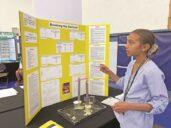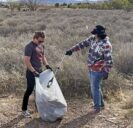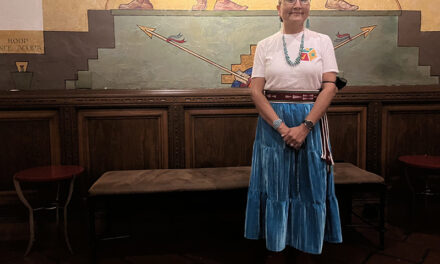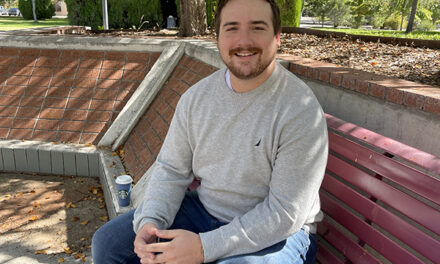
New Mexico Tech professor Dan Jones is encouraging his students to improve their science communication skills with a writing assignment that benefits high school students. Courtesy photo.
An assignment to write articles for an online science website has provided an opportunity for New Mexico Tech students to hone their writing skills as well as promote greater access to scientific research. As part of three courses over the past few years, Tech students have had articles published on the Sciworthy website, a nonprofit site that calls itself the “encyclopedia of the frontier of science.”
A mutual connection led Daniel S. Jones, Ph.D., assistant professor of geobiology in Tech’s Earth and Environmental Science Department and academic director at the National Cave and Karst Research Institute (NCKRI), to contact Sciworthy’s editor in fall 2019 and propose a class activity of writing summaries for the website. Since then, Jones has offered the writing assignment for both undergraduate and graduate students four times in three classes: geomicrobiology, cave and karst, and a cave and karst seminar.
The Tech students are assigned to write a 500 to 700 word summary of a recent primary literature (peer-reviewed journal) article in layman’s language so that an interested high school student who doesn’t necessarily have a background in the topic could understand the research. After taking an online science writing training course from Sciworthy, students are encouraged to write jargon-free articles about research that’s related to their final proposal or review paper for the class. As an incentive, if the student’s article is published on the Sciworthy website, they don’t have to take the final exam.
Jones said that overall students really like the assignment, and it’s a big deal for them to get their science articles published.
“I’ve gotten a lot of positive feedback about it,” he said. “Students generally agreed that it helped them comprehend and understand the big picture of scientific papers.”
Besides helping students improve their science writing skills and having their work professionally edited, the assignment increases their awareness of the importance of making scientific research accessible and understandable to the general public, Jones said.
“It’s the best example I’ve ever seen of explaining a really complex topic without dumbing it down,” he said. “You shouldn’t have to have a Ph.D. or master’s in that specific area to understand these kinds of findings.”
So far, Tech students have written about topics ranging from biocrusts – a thin layer of semi-solid dirt that covers the surface of many desert landscapes – to fossils called “stromatolites,” which are formed when layered communities of different types of bacteria trap sand, dirt and debris in their structure over time – to microbial mining, using microbes to break down rocks as an alternative to traditional mining methods.
Based on the positive results from Tech and a few other institutions that have participated in the science writing assignment, Sciworthy is now marketing the Professor Partnership Program (PPP) with its online science writer training course to professors at other institutions. According to Gina Misra, Sciworthy’s editor, seven schools are now involved. Misra credits Jones for PPP’s initial success.
“Dan is and always was serious about giving his students genuine science communication training, so I welcomed his geomicrobiology class to write Sciworthy articles if he agreed to review them for content accuracy and I would take care of the rest — writing and comms training,” she said. “It went so well, we did it again. Eventually it turned into the Professor Partnership Program. It’s been a wild success, almost by accident.”
According to Misra, Sciworthy offers a platform for students to learn about scientific reasoning.
“It’s not about crafting a story or narrative, or about persuasion or leveraging the attention economy,” she said. “It is about conveying to the reader how a scientist thinks through a single study so that they can experience first hand what scientific thinking is supposed to feel like. They don’t need to be convinced because they can see the reasoning for themselves. This is crucial not only for non-scientist readers to have access to articles like this, but for science students to learn to think, and thus write, in this style.”
Dr. Jones has posted some of his Tech students’ articles online at: https://www.nmt.edu/academics/ees/faculty/djones_documents/sciworthy_activities.php
More Tech students articles are online at:
https://www.sciworthy.com/category/ppp/nmt-caves/






















